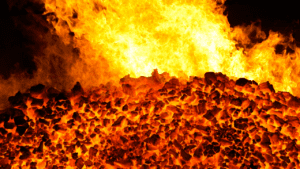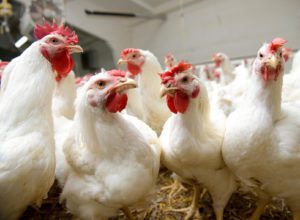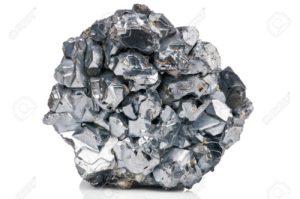
Ukraine reduced coke and semi-coke exports by 43.6% year-over-year to 14,421 tonnes in 2019.
According to customs statistics, published by the State Fiscal Service of Ukraine, coke and semi-coke exports were down 59.8% in monetary terms, to $2.715 million.
The majority of deliveries were made to Belarus (23.78% in monetary terms), Moldova (19.48%) and Romania (17.67%).
Imports of coke and semi-coke rose by 4.4%, to 876,938 tonnes in 2019, worth $263.429 million (4.6% up).
The goods were mainly imported from Russia (77% in monetary terms), Poland (12.28%) and the Columbia (4.46%).

Ukraine in January-December 2019 increased export of poultry by 26%, to 414,490 tonnes, the State Customs Service has reported. According to its report, in monetary terms exports of these products increased by 14.2%, to $578.63 million. In 2019, import of poultry and offal increased by 0.6% and amounted to 131,180 tonnes, in monetary terms by 1.2%, to $52.53 million.
In addition, according to the agency, pork exports in January-December 2019 amounted to 2,260 tonnes, which is 28.6% more than in 2018. These products were delivered for a total of $5.27 million (39.6% more).
Pork imports to Ukraine last year decreased by 18.8%, to 23,190 tonnes. Pork was imported to the country for $44.23 million, which is 14.8% less than the figure for 2018.

The enhanced sanctions of the Russian Federation against Ukrainian goods will affect 1.3% of current exports of Ukrainian goods for January-September 2019, which in monetary terms is $31.2 million, and about 0.4% of current imports of Russian goods to Ukraine for the specified period, or $21.4 million, a source at the Ministry of Economic Development, Trade and Agriculture has told Interfax.
The largest restrictions regarding the ban on imports to Ukraine relate to the following items: boilers for central heating for $8.7 million, parts of pumps for $3.6 million, radiators for central heating with non-electric heating for $2.8 million.
The source noted that a significant part of goods that fell under the sanctions is industrial medical goods: plastic products for $6.5 million, pipes, tubes, hoses for $4.5 million, hygienic or pharmaceutical products from vulcanized rubber for $1.4 million, other products made of vulcanized rubber, except for hard, for $3.7 million.
At the same time, the ban on import to Ukraine of Russian paper and cardboard for recycling in monetary terms is estimated at $21.4 million. According to data of the State Statistics Service for the nine months of 2019, the volume of the Russian Federation in the total import of this item is 52.6%.
As for the supply of starch, in January-September 2019 this product was not exported to the Russian Federation.
“At the same time, there is a tendency to increase the use of EU tariff quotas for starch with a volume of 10,000 tonnes compared to 2016. During 2017-2019, the quota is used almost in full,” the source said.
The government of the Russian Federation by the resolution of December 16, 2019 expanded the list of goods prohibited for imports to Ukraine, supplementing it with the position “paper and cardboard for recycling.” In addition, the list of goods originating in Ukraine, which are forbidden for imports to the Russian Federation, was expanded.

Ukraine has retained the zero quotas for exports of unprocessed gold and silver (apart from banking metals) and scrap precious metals and extended the licensing of exports of anthracite for 2020.
The Cabinet of Ministers approved resolution No. 1109 on December 24 and posted it on its website on December 27.
In addition, according to the Montreal Protocol on Substances that Deplete the Ozone Layer, in 2020, exports and imports of the respective substances and goods will be licensed as previously.

Ukraine in January-October 2019 increased exports of titanium containing ore and concentrate in kind by 1.4% compared to January-October 2018, to 516,561 tonnes.
According to customs statistics released by the State Fiscal Service, over the period exports of titanium ore and concentrate in monetary terms increased by 19.1%, to $126.621 million.
Major exports were made to the Czech Republic (18.67% of deliveries in monetary terms), Russia (16.82%), and Egypt (16.57%).
Ukraine in January-October 2019 imported 711 tonnes of similar products worth $500,000 from Senegal and Vietnam, while in January-October 2018 it imported 15,797 tonnes of titanium ore and concentrate worth $3.088 million from Senegal.
As reported, Ukraine in 2018 increased exports of titanium containing ore and concentrate in kind by 2.7% compared to 2017, to 599,494 tonnes. Last year exports of titanium ore and concentrate in monetary terms increased by 19.5%, to $125.722 million. Major exports were made to the Czech Republic (19.41% of deliveries in monetary terms), Turkey (17.96%), and Russia (15.68%).
Ukraine in 2018 imported 15,874 tonnes of similar products worth $3.142 million from Senegal and Mozambique, while in 2017 it imported 202 tonnes of titanium ore and concentrate worth $143,000 from Senegal (87.41%), Finland (10.49%), and Iran (2.1%).
Vilnohirsk state mining and metallurgical combine (Dnipropetrovsk region), Irshansk state mining and processing combine (Zhytomyr region), Valki-Ilmenite and Mezhdurechensk Mining and Concentration Complexes (both are located in Irshansk, Zhytomyr region) are the main producers of titanium ore in Ukraine.
Dnipro-based Velta production and commercial firm built a mining and processing complex at the Birzulivske ilmenite deposit, which has a 240,000-tonne ilmenite concentrate capacity per year.
Holding company Velta Group Global Ltd. was registered in London in November 2011.